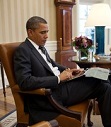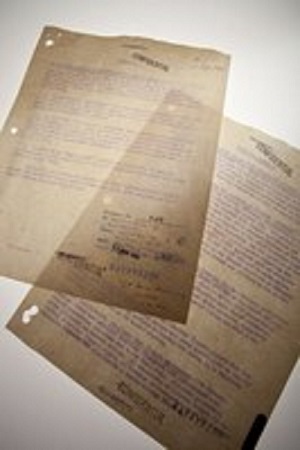Which President wanted his daily intelligence briefing small enough to slip in his jacket pocket?

President Truman was the first commander-in-chief to receive a daily briefing from the nation’s intelligence community. JFK requested that a concise summary be delivered in a small format that could be slipped into his jacket pocket. And President Obama was the first occupant of the Oval Office to get his daily briefing delivered electronically, on a computer tablet.
For more than 60 years U.S. presidents have received a daily, multi-source intelligence digest, says the CIA in a feature article it recently posted on the Agency’s Web site.
President Harry S. Truman was the first to receive what was then known as the Daily Summary on Feb. 15, 1946. Although that first summary was much less formal than today’s product, it marked a change in the way U.S. intelligence agencies provide strategic warning and tactical insights to the nation’s highest leaders.
Over the years, the daily intelligence product evolved to meet the needs of the president and his national security officials. In 1951, CIA formed the Office of Current Intelligence (OCI) to consolidate the production of current intelligence. At the time, CIA analysts were already preparing a closely held, all-source weekly intelligence publication, called the Situation Summary, which helped inform then-Director of Central Intelligence (DCI) Walter B. Smith’s briefings to President Truman.
Shortly after OCI was formed, the Daily Summary became the Current Intelligence Bulletin, first issued on Feb. 28, 1951. The Current Intelligence Bulletin would continue for several years, taking on a variety of forms and increasing in scope, says the CIA’s article.
In 1958, it became the Central Intelligence Bulletin (CIB) and, on the recommendation of CIA’s inspector general, analysts began coordinating the Bulletin with other members of the Intelligence Community (IC). It was also circulated more widely to other national security principals.

In 1961, President John F. Kennedy’s aides requested a more concise summary of all-source intelligence on key issues — something small enough to fit in the president’s jacket pocket. Three days later, the President’s Intelligence Checklist (PICL) was delivered to President Kennedy, who liked it immediately. From that point forward, the PICL remained essentially unchanged until the President’s Daily Brief (PDB), crafted to President Lyndon B. Johnson’s specifications, replaced it in 1964.
The CIA continued to produce the PDB until the Intelligence Reform and Terrorism Prevention Act was signed in 2004. That legislation created the Office of the Director of National Intelligence (ODNI), which is responsible for oversight and coordination of the IC.
Today, the PDB is an IC product coordinated by ODNI’s PDB staff in partnership with the CIA Directorate of Intelligence (DI)’s President’s Analytic Support Staff. It is still all-source publication that the president relies upon heavily to inform his national security decisions, and CIA analysts remain primary contributors.
The style, format and presentation of the PDB are based on the preferences of the current president. President Barack Obama, for example, asked CIA to explore a way to deliver the PDB electronically. On Feb. 15, 2014 — 68 years after the first Daily Summary was published — the final hard copy edition of the PDB was printed. President Obama and other key national security policymakers now receive the PDB, six days a week, in a tablet format.








